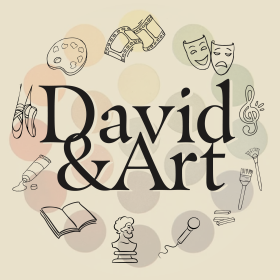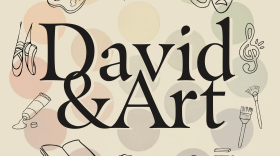
Art reveals the world to us in new ways. David and Art is KWBU's weekly feature focusing on art.
The module is hosted by David Smith, an American historian with broad interests in his field. He’s been at Baylor University since 2002 teaching classes in American history, military history, and cultural history. For eight years he wrote an arts and culture column for the Waco Tribune-Herald, and his writings on history, art, and culture have appeared in other newspapers from the Wall Street Journal to the Dallas Morning News.
The very first record he remembers listening to when he was little was Leonard Bernstein and the New York Philharmonic’s recording of Prokofiev’s Peter and the Wolf and that set him on a lifelong path of loving music and the arts. He’s loved history for almost as long, and finally saw them come together in his career. He believes that history illuminates the arts and the arts illuminate history—that they co-exist and are best understood together.
Follow David on Twitter @DavidASmith12
-
The Kennedy Center is one of Washington’s most visible cultural institutions, but its origin story is less straightforward than you might expect. David Smith begins that story on today’s David and Art.
-
In today's episode, host David Smith focuses on a career that blended performance, education, and cultural outreach in a very public way.
-
Host David Smith steps into the early Cold War years, when lawmakers decided they knew exactly what art should be, and the consequences for those who wouldn't play by their rules.
-
Last week, host David Smith looked at Diego Rivera’s Detroit murals, and how heated the debate over art could get in the 1930s. Today, a new commission put Rivera face-to-face with a very different kind of pushback.
-
Last week, David followed Diego Rivera into Detroit, where art, industry, and public opinion all collided. Today, he looks at what happened next.
-
In recent episodes of David and Art, host David Smith has been unpacking the long, messy relationship between the arts and American identity. Today, he zeroes in on a moment when defining ‘American art’ sparked more arguments than agreement.
-
In his last episode of David and Art, host David Smith traced how the government first started wrestling with its role in the arts. Today, he rolls back the clock to look at how that push-and-pull actually began.
-
The Eisenhower years are usually remembered for buttoned-up politics and post-war calm, but behind the scenes, some unexpected conversations were happening about art. The kind that hinted at big changes ahead.
-
Art doesn’t just show us history — sometimes it travels through it. Statues, paintings, entire collections make their way across centuries and continents, carrying their stories with them. In today’s David and Art, host David Smith follows one of those journeys, from ancient Rome to Texas.
-
On this edition of David in Art, host David Smith looks at how a specific case of political leadership supported, inspired and influenced countless artists, both professional and amateur alike.


